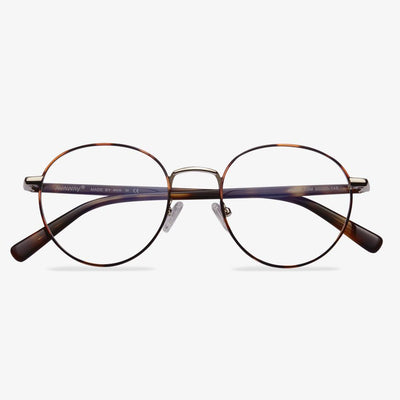Difference between green film and blue film
In addition to the usual hardening, anti-fouling, anti-reflection, anti-radiation, and other functions, the green film has remarkable anti-ultraviolet performance, suitable for people who work outdoors for a long time to use. In addition to the general hardening, anti-fouling, anti-reflection, and anti-ultraviolet functions, blue film’s anti-radiation ability is very good, and it is suitable for computer workers and other people affected by radiation greater.
The coated lenses were originally produced in green, mainly to distinguish them from the uncoated lenses. At 515 nm, the reflection increases the reflectivity by about 2%, so there is a contrast, and the green film is seen in the reflection. This film is the most standard anti-reflective film, and it is the best and oldest one available.
How to drive at night with glasses?
If you need to wear glasses while driving, you'll need special glasses when driving at night, because common lenses reflect oncoming lights, which produces a faint glare. This will reduce your visibility. It's OK to wear contact lenses while driving. As you get older, your eyes become more sensitive to glare. Ordinary sunglasses or goggles are only suitable for wearing during the day, driving at night will seriously affect the vision (national standards stipulate that light transmittance of night driving glasses must be greater than75%). Although the all-weather driving glasses can weaken the strong lights, the vision darkens and affects road safety which does not meet the national standards for driving glasses at night. You should choose functional driving glasses that can block strong light, glare and increase the field of vision. This can effectively reduce the glare of the car lights but can filter out the extra harmful light. When worn at night, it can soften the strong lights and make the vision clearer. In this way, the safety of drivers is ensured, the fatigue of eyes is alleviated, and the radiation damage of harmful lights to glasses is prevented.
Pay attention to the wearing of myopia sunglasses when driving.
Some drivers are slightly myopic, usually driving without wearing a myopic mirror. There is no problem. But once you wear sunglasses, the problem comes: your eyes are more likely to tire and your vision will decline, just as your driving vision will be affected at night. Therefore, for the driver of slight myopia, there is no problem in usually driving, but if you want to wear sunglasses, you must be equipped with the lens of myopia degrees.
Do all glasses come with nose pads?
The glasses without the nose brace are plate glasses. In reality, there is still a nose pad, but it is relatively small and it's part of the frame. The westerners have high nose bridges, and many glasses have no or very small nose pads. For example, Harry Potter's glasses have no nose pads. European and American brands will change their nose pads for the Asian market. Eyeglasses without a nose pad rely on the bridge of the nose to support the center beam. It's hard for Asians to stand up, and their eyes are more protruding than sunken like westerners. Glasses are usually demanded to keep a 12mm distance between the lens and the eyeball, otherwise, the optical performance will have a great impact.
Injection frame
Acetate cellulose pellets are extruded by an injection molding machine, which is called an injection frame. Its characteristic is that it saves raw materials, can be mass-produced, has a lower cost, and is cheaper than a plate rack. But the firmness is not as good as the plate frame. However, injection frames are mostly used for glasses for the elderly and children because of their lightweight and resistance to allergies. The injection frame is made of laminated plastic. It is made by pasting a thin layer of plastic of one color on another thicker layer of plastic. Thick materials are mostly transparent pigments. It is also made of three or more layers of plastic.
Bifocal Lens
Bifocal lenses have two observation areas separated by visible lines, a larger observation distance area, and a smaller reading area. It may take some time for people who are wearing bifocal glasses for the first time to get used to the lenses. This is mainly due to learning how to move the eyes between the observation distance area and the reading area. Some people will also find that there will be an 'image jump' phenomenon at the visible line between the distance and the reading area, especially for those with limited mobility, who must look down when walking. The best way to get used to bifocals is to wear them as much as possible.
The frame materials
You should choose the driver's glasses with alloy materials. The glasses made of this material are light and strong, so your ears won't be uncomfortable when you wear them for a long time.


















































